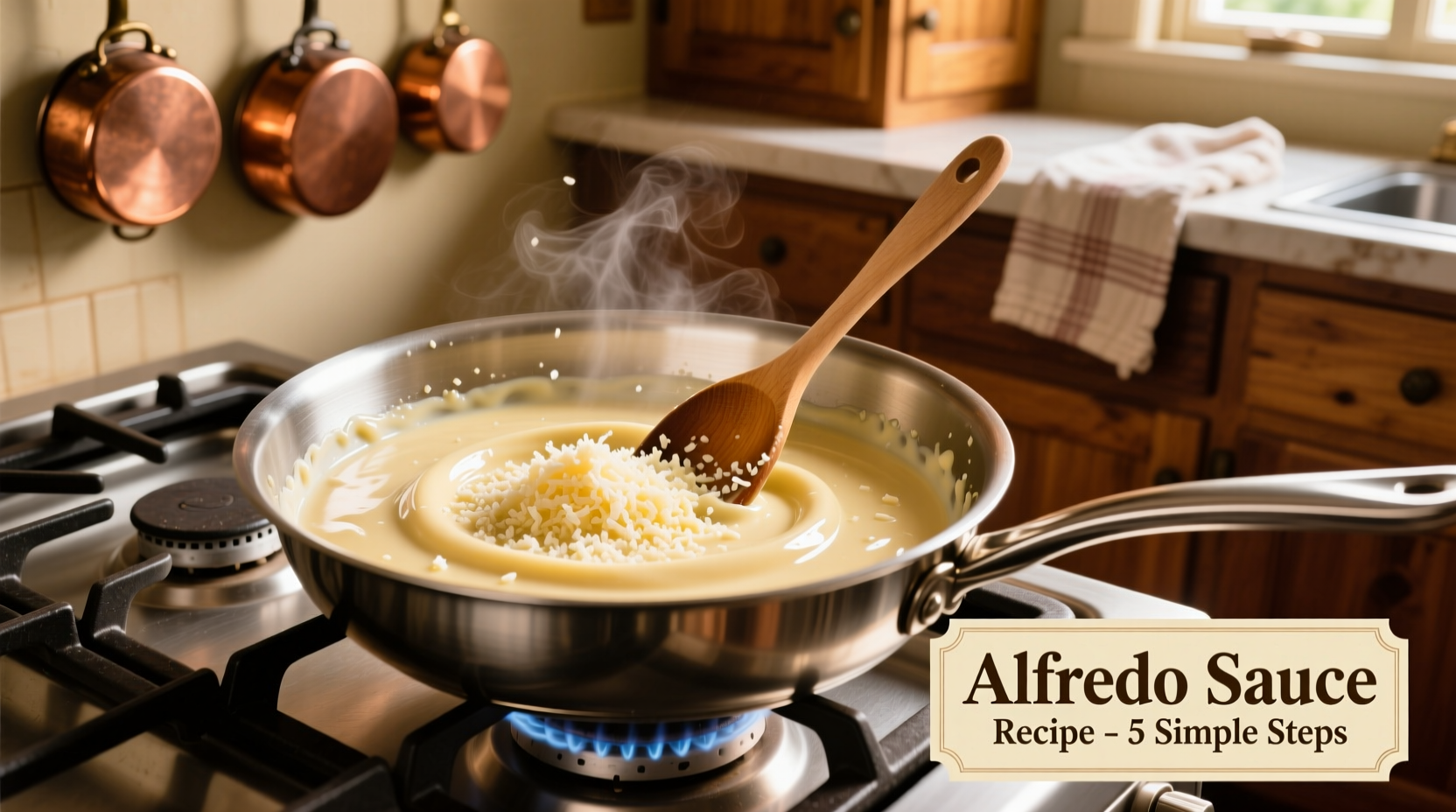The authentic way to cook alfredo sauce requires just 5 ingredients: high-quality unsalted butter, freshly grated Parmigiano-Reggiano, freshly ground black pepper, heavy cream, and a pinch of nutmeg. This 15-minute recipe creates a silky, restaurant-quality sauce that clings perfectly to pasta without separating or becoming greasy.
Why This Alfredo Sauce Recipe Works Every Time
Many "alfredo" recipes you find online miss the mark—they're either too heavy on garlic (not traditional) or rely on cheese powders and thickeners. Authentic Roman Alfredo alla Scrofa uses only butter, cheese, and pasta water to create emulsion. Our perfected home version adds cream for stability while maintaining the delicate balance that makes this sauce exceptional.
The Essential Ingredients Breakdown
Quality matters more here than in almost any other sauce. Let's examine what you'll need and why each component is non-negotiable:
| Ingredient | Minimum Quality Requirement | Why It Matters |
|---|---|---|
| Parmigiano-Reggiano | Freshly grated block (minimum 24-month aged) | Pre-grated cheese contains anti-caking agents that prevent proper melting |
| Unsalted Butter | European-style (82%+ butterfat) | Higher fat content creates smoother emulsion without separating |
| Heavy Cream | Full-fat (36-40% butterfat) | Lower fat alternatives cause sauce to break when heated |
Your Step-by-Step Alfredo Sauce Process
Follow this sequence precisely for perfect results. The order of operations is critical in dairy-based sauces.
Preparation Phase (5 minutes)
- Grate 1 cup (90g) Parmigiano-Reggiano using medium holes on a box grater
- Measure 1 cup (240ml) heavy cream into a glass measuring cup
- Cut ½ cup (113g) European butter into 8 equal cubes
- Bring pasta water to a rolling boil (you'll need ½ cup for emulsification)
Sauce Making Sequence (10 minutes)
- Melt butter in a heavy-bottomed skillet over medium-low heat (3 minutes)
- Whisk in cream and bring to gentle simmer (do not boil)
- Reduce heat to lowest setting and gradually whisk in cheese, ¼ cup at a time
- Add ½ teaspoon freshly ground white pepper and pinch of nutmeg
- Continue whisking until sauce coats the back of a spoon (4-5 minutes)
- Remove from heat and slowly whisk in ¼ cup reserved pasta water

Troubleshooting Common Alfredo Sauce Problems
Even experienced cooks encounter issues with dairy sauces. Here's how to fix them immediately:
If Your Sauce Breaks (Separates)
This happens when temperature changes too rapidly. Create an emergency emulsion:
- Remove sauce from heat immediately
- Whisk in 2 tablespoons cold cream
- Add 2 tablespoons pasta water while whisking vigorously
- Return to very low heat for 30 seconds max
If Sauce Is Too Thin
Don't add more cheese—that causes clumping. Instead:
- Simmer gently for 1-2 minutes to reduce
- Whisk in a slurry of 1 tsp cornstarch + 1 tbsp cold cream
- Never reduce by more than 25% or texture becomes gummy
Perfect Pairings and Professional Variations
While traditional fettuccine is classic, these pairings create exceptional experiences:
Pasta Shape Guide
- Fettuccine - The classic choice (1:1.5 sauce to pasta ratio)
- Pappardelle - For heartier dishes (1:2 ratio)
- Garganelli - Quill-shaped pasta traps sauce beautifully
Elevated Variations (Without Compromising Authenticity)
- Lemon Zest Alfredo - Add 1 tsp zest during final emulsification
- Truffle Alfredo - Stir in ½ tsp white truffle oil off-heat
- Prosciutto Alfredo - Crisp 2 oz prosciutto before starting sauce
Storage and Reheating Protocol
Alfredo sauce presents unique challenges when storing due to its dairy content. Follow these USDA food safety guidelines:
- Cool to 70°F within 2 hours of cooking (danger zone: 40-140°F)
- Store in airtight container for maximum 3 days
- Reheat gently with 1-2 tbsp cream or pasta water
- Never microwave directly—use double boiler method
Why Traditional Roman Alfredo Differs From American Versions
Understanding the evolution of this sauce helps you make informed choices. The original 1914 recipe by Alfredo di Lelio contained only:
- Butter
- Parmigiano-Reggiano
- Pasta water
The cream-based version popular in America emerged in the 1950s when dairy companies promoted cream usage. While not authentic Roman, our recipe bridges tradition with practical home cooking needs by maintaining proper emulsion chemistry.











 浙公网安备
33010002000092号
浙公网安备
33010002000092号 浙B2-20120091-4
浙B2-20120091-4